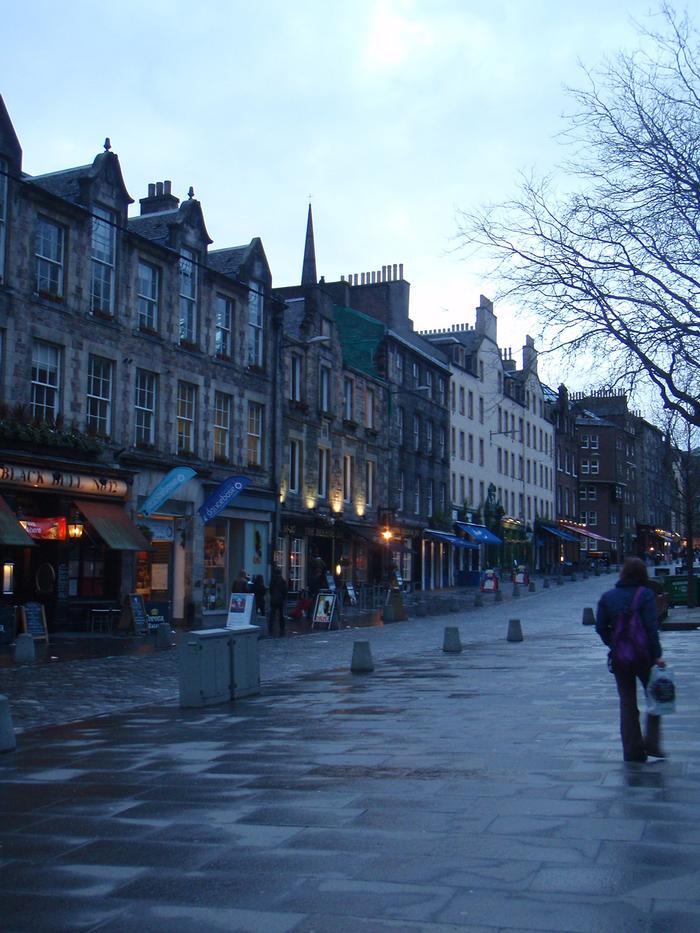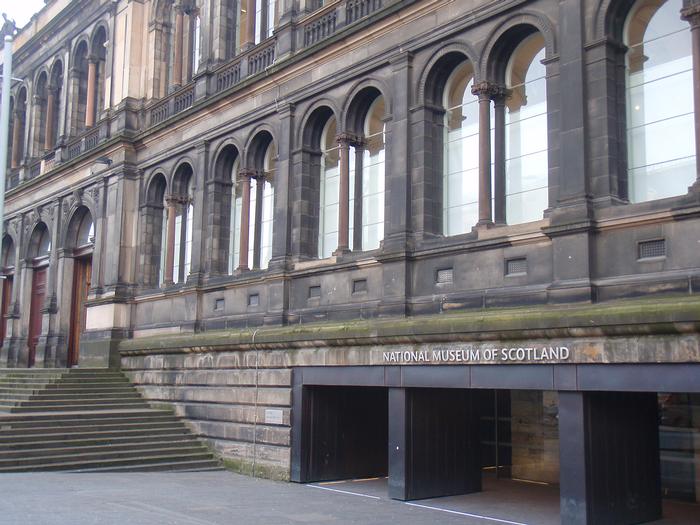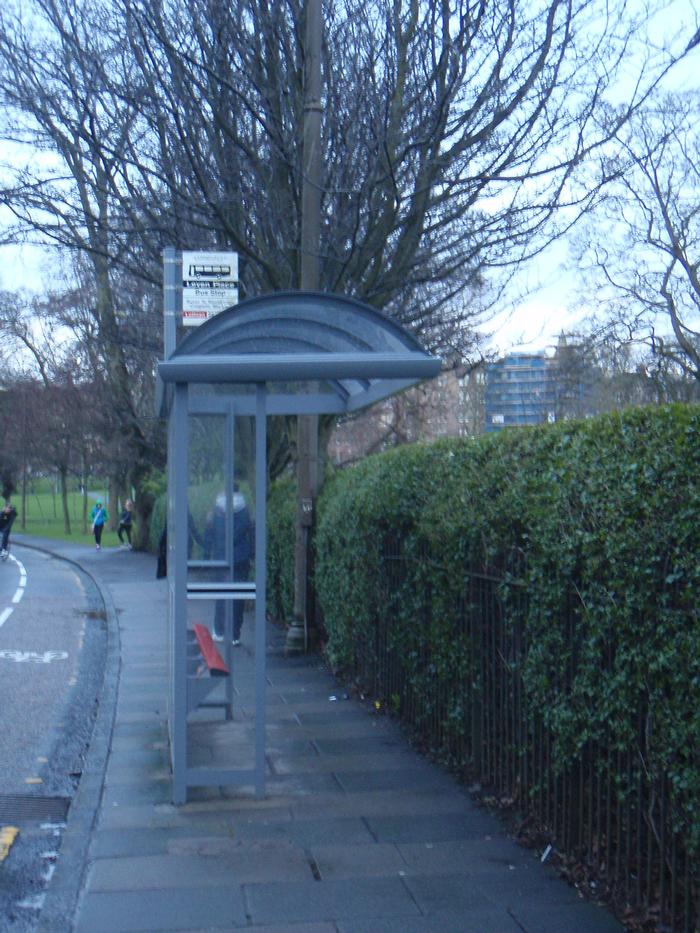[ID:595] The Disabled Traveler in EdinburghUnited Kingdom Edinburgh is a medieval city full of twisting and narrow uneven cobblestone roads, many of which have no sidewalk at all. Much of Edinburgh’s charm is experienced by walking its many closes and historical streets, which at the best of times need to be carefully trodden. The task of making accessible a city whose very identity is drawn up from its ancient roads through its historical buildings, which are inherently inaccessible, is no mean feat; and this challenging urban fabric together with a population explosion during Edinburgh’s Festival season in the month of August each year poses a number of mobility challenges for disabled residents and visitors alike. Rising up to these challenges, Edinburgh boasts a number of accessibility initiatives — from transportation options to theater experiences — that make the city a disabled-friendly place to live and explore. However, some of these initiatives lack a uniformity and consistency in their application across the city leaving visitors and residents unable to be sure that accessible options will be readily available to them.
A quiet local joke says that no matter which way you walk in Edinburgh, it is uphill. As a visitor to Edinburgh, this couldn’t feel more true. Edinburgh’s Old Town district is full of steep hills, and where there isn’t a hill the way is furnished with seemingly never-ending staircases. The main tourist thoroughfare, known as the Royal Mile, stretches from Edinburgh Castle to Holyrood Palace along the steeply inclined spine of an extinct volcano; and while one direction is certainly downhill, pedestrians experience an ever-narrowing sidewalk that all but disappears as you approach both the castle and the palace (IMAGE 1). This lack of space becomes even more apparent in August when Edinburgh’s population almost doubles in size during the Festival season. People are often seen hopping between street and sidewalk to get around gathering crowds and for a less-abled body the simple task of getting from point A to point B can become nearly impossible. Accessibility issues in the Old Town are a direct consequence of space constraints set up by an urban planning that existed before the car and now needs to accommodate it without changing the essence of Edinburgh’s character which draws so many visitors to the city. As a result, and rather counter-intuitively, space for the pedestrian suffers.
However, Edinburgh’s Grassmarket in the Old Town handles the co-existence of the car and pedestrian very well resulting in one of Edinburgh’s most accessible tourist spaces without abandoning Edinburgh’s greater visual identity. The solution allows cars to travel along the Grassmarket’s main thoroughfare during limited hours so that it is a pedestrian-only zone for most of the day. Rather than being confined to a single narrow sidewalk bustling with locals and visitors, pedestrians can slow down and really enjoy the nature of the Grassmarket and one of the best views of Edinburgh Castle. Here the curb, which often poses a tripping hazard, is removed and ground surface treatment indicates the change from sidewalk to road with sidewalks built of smooth stone and the road built of cobblestone (IMAGE 2); the benefit of this is that pedestrians enjoy an even walking surface and the cobblestone becomes an indicator for the road, both visually and under-foot, which still maintains the visual identity of the Grassmarket as a medieval gathering place. The Royal Mile could benefit from a similar treatment applied along its entirety, solving the problem of the vanishing-sidewalk that is so abundant in Edinburgh’s Old Town. Typically, the sights, shops and restaurants along the Royal Mile are enjoyed by walking down one side of the street towards the palace and then up the other side of the street towards the castle, or by zigzagging from one side of the street to the other while making your way downhill. Both these methods pose access problems to wheelchair users and anyone who has difficulty walking. By eliminating the curb that separates sidewalk and road and restricting vehicle access on the road to the early hours of the day, the Royal Mile could become a continuous downhill promenade enabling everyone to more easily enjoy the shops, sights and restaurants on both sides of the high street without the tripping hazards.
Ideally, one would be able to count on the availability of accessible venues in a city with Edinburgh’s reputation for a vast and rich array of cultural offerings and gastronomic delights. Unfortunately, many buildings are still not well-adapted for wheelchair users with toilets often located on basement levels or the venue itself located on the upper floors of buildings that don’t have elevators; this is especially true in restaurants and pubs. Community-led websites offer reviews and features of cafes, pubs and entertainment venues with an accessible spin; and accessibility options in theaters, museums and cinemas are also available to view on their own individual websites. Many of the city’s theaters offer touch-tours for the visually-impaired and audio options for the hard-of-hearing which allow all patrons to enjoy the shows to full capacity. The National Museum of Scotland offers handling sessions for the visually impaired and signed tours for the hard-of-hearing which can be booked in advance. These initiatives help to create an equal experience for all patrons but also serve to reduce the stigma related with disability by showing that visual impairment or loss of hearing need not affect the ability to enjoy and be entertained by Edinburgh’s cultural offerings. Some city museums, such as the Surgeon’s Hall Museum which details Edinburgh’s important contributions to the medical field, are not so well-equipped to manage mobility issues yet; but accessibility is becoming a priority in public spaces and the National Museum of Scotland recently underwent a refurbishment which saw the opening of a new street-level entrance that replaces the former segregated general and accessible entrances (IMAGE 3). This is paramount for visitors with mobility constraints when accessible entrances can often be located away from the general entrance, unwittingly singling out the disabled.
In a truly accessible city, visitors and residents should be able to expect accessible options being readily available to them without having to consult a website before leaving the hotel or house. While Edinburgh would have to see some major renovations of its older buildings to make this possible, it is possible in the interim to establish a city-wide symbol system which rates the level of accessibility of a venue and is displayed outside the venue, similar to a hotel’s star-rating. Being able to determine how accessible a restaurant or pub is from the outside would allow potential patrons to select their venue without suffering the embarrassment or inconvenience of entering the premises only to find that it lacks the facilities you require. A highly accessible space could also potentially become a point of pride for owners and managers and gaining a higher rating could be an incentive for those owners to improve the accessibility of their venues. Until there is a push for major renovations of older buildings, establishing a city-endorsed website that pulls all of the information from community and business websites into one comprehensive database of accessible offerings in Edinburgh would be a hugely valuable resource for visitors and residents alike as a one-stop reference point in planning days out. The city already has detailed webpages about accessible transport options and adding information to the website that details levels of accessibility for eating and drinking places as well as Edinburgh's attractions would only enhance its usefulness.
While most of Edinburgh’s major tourist attractions lie within about one mile of each other, visitors can take advantage of Edinburgh’s 100% accessible bus fleet to get from one attraction to another; there are also several accessible tourist bus companies that follow a sight-seeing route and drop off passengers directly outside Edinburgh’s main attractions. Residents have access to a taxi discount card, allowing disabled and aging members of the community to travel independently with ease at an affordable cost; a handicab scheme is available for those requiring extra assistance. These mobility initiatives create an easily accessed link between the community and the physical city allowing independent navigation of the city and offering an alternative to surmounting Edinburgh’s steep hills alone. But again, problems arise from Edinburgh’s limited space and sidewalks often become over-crowded at bus stops and pose a challenge to anyone trying to use the sidewalk shortly before a bus is due to arrive. This is partly due to the narrow nature of Edinburgh’s sidewalks, but can also be attributed to bus shelter design in the city which is a fairly standard L-shaped shelter with one or two enclosed sides (IMAGE 4). While Edinburgh’s infrastructure makes it impossible to extend the width of many sidewalks in the city, one solution to ease the crowding at bus stops and subsequent mobility issues that arise would be to explore a new kind of bus shelter design that does not inhibit the flow of movement on the sidewalk while still offering protection from the rain which sometimes feels as if it falls down, up and sideways.
Edinburgh’s accessible public transport initiatives in the city center are advanced and foster a sense of independence for the disabled traveler. Where transport initiatives fall somewhat short is in getting from Edinburgh Airport into the city center. Currently visitors to Edinburgh can travel from the airport to the city center by the Airlink Bus or by taxi. The Airlink bus is accessible but not ideal for disabled travelers due to the number and sizes of baggage on board, leaving Edinburgh’s taxi service as the only real alternative. The price difference between these two methods of travel is high, at about £20 difference one-way, and creates an inequality in services provided at affordable cost. The new tram system that is due to open in the summer of 2014 will connect Edinburgh’s airport with the city center, making it a cheaper alternative to taking a taxi and an easier alternative to the Airlink bus. The trams will also serve to connect some of Edinburgh’s periphery communities to the city center; accessible transport in these areas will be vastly improved by replacing buses which usually only have one space available for a wheelchair or pram with fully accessible cars running the length of the tram.
At first glance, Edinburgh’s historic buildings and cobblestone roads together with its steep hills would appear to make the city grossly inaccessible; Edinburgh has a unique challenge in creating an accessible city while maintaining the historic atmosphere that draws so many people to the city. The 100% accessible public transport system enables everyone to explore the city independently and offers some relief from Edinburgh’s hills and uneven streets when traveling between sights; but the level of accessibility at tourist sites can vary significantly and accessible facilities cannot be assumed. If Edinburgh is to become a truly accessible city it needs to apply consistent initiatives that go further than transportation and become part of the physical landscape and social fabric of Edinburgh. I think it can begin to do this by paying closer attention to pedestrian-only zones in busy tourist areas and working to establish accessibility rankings of its restaurants, pubs and cultural venues that can be easily read and used to make informed choices, whether they are viewed on an online database or while out on the town.
If you would like to contact this author, please send a request to info@berkeleyprize.org. |




